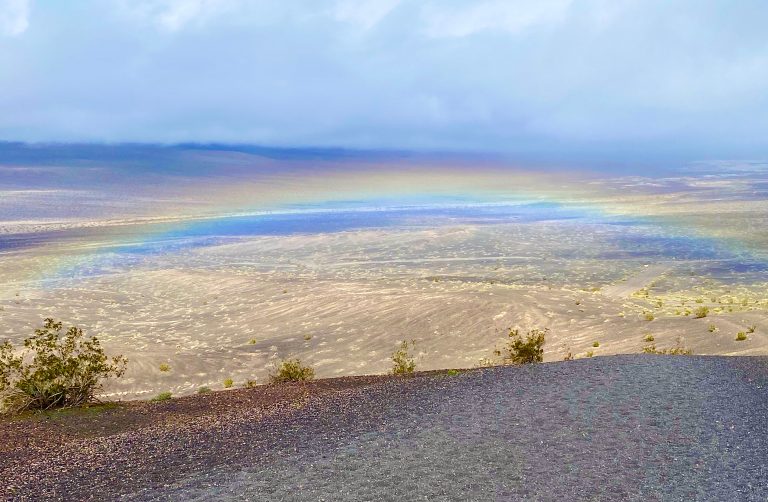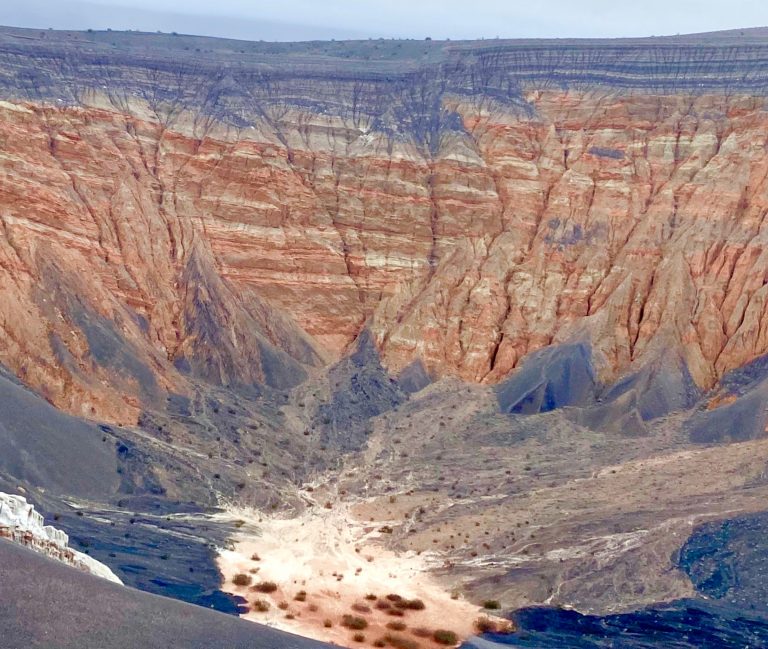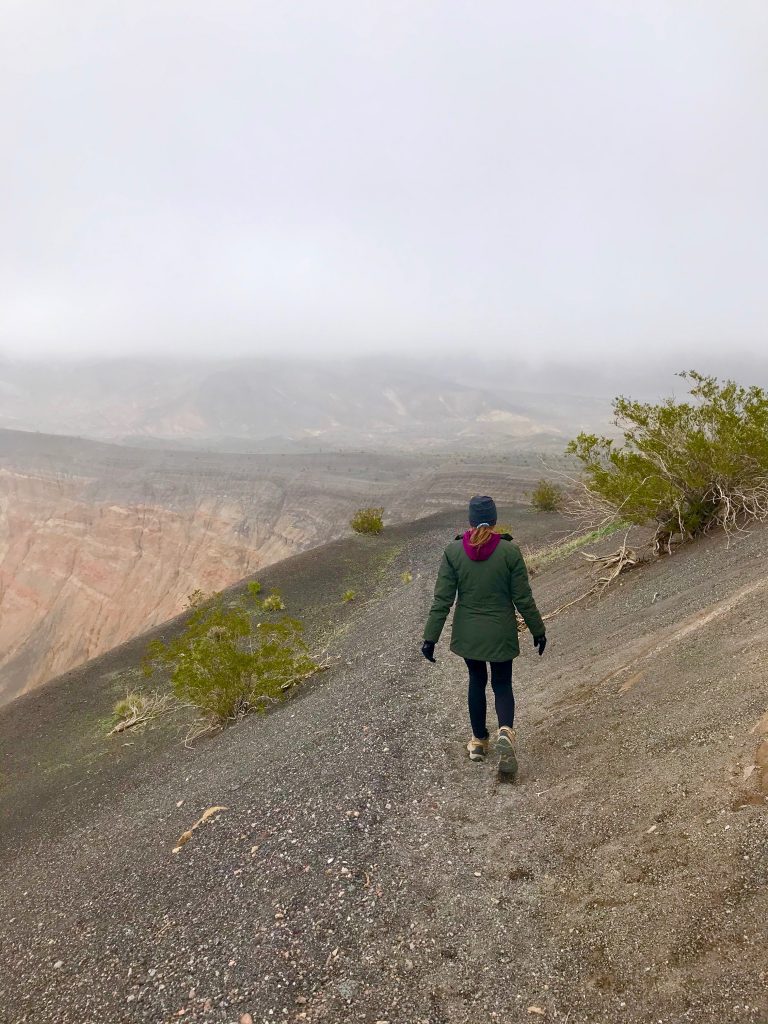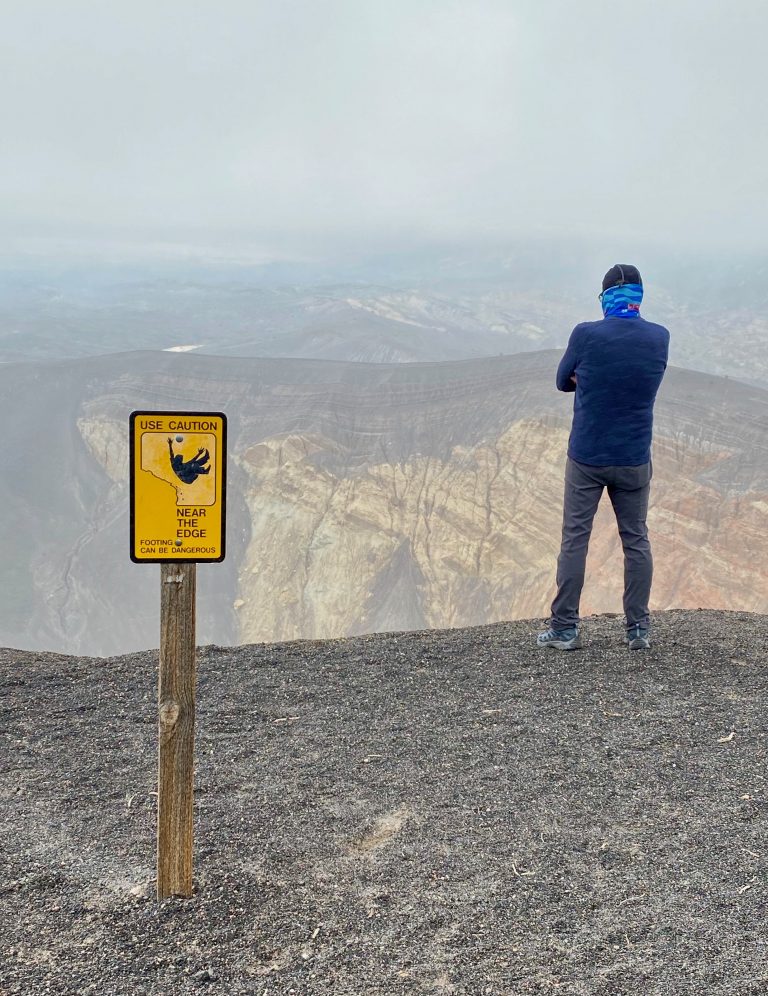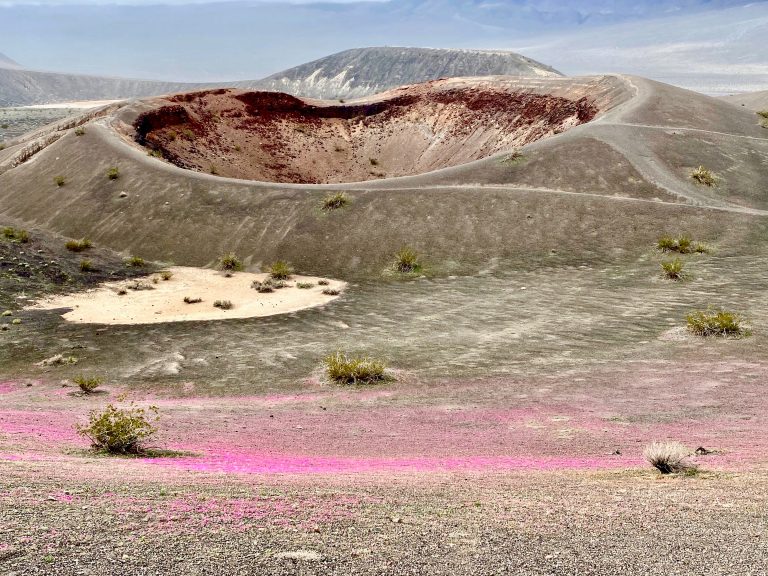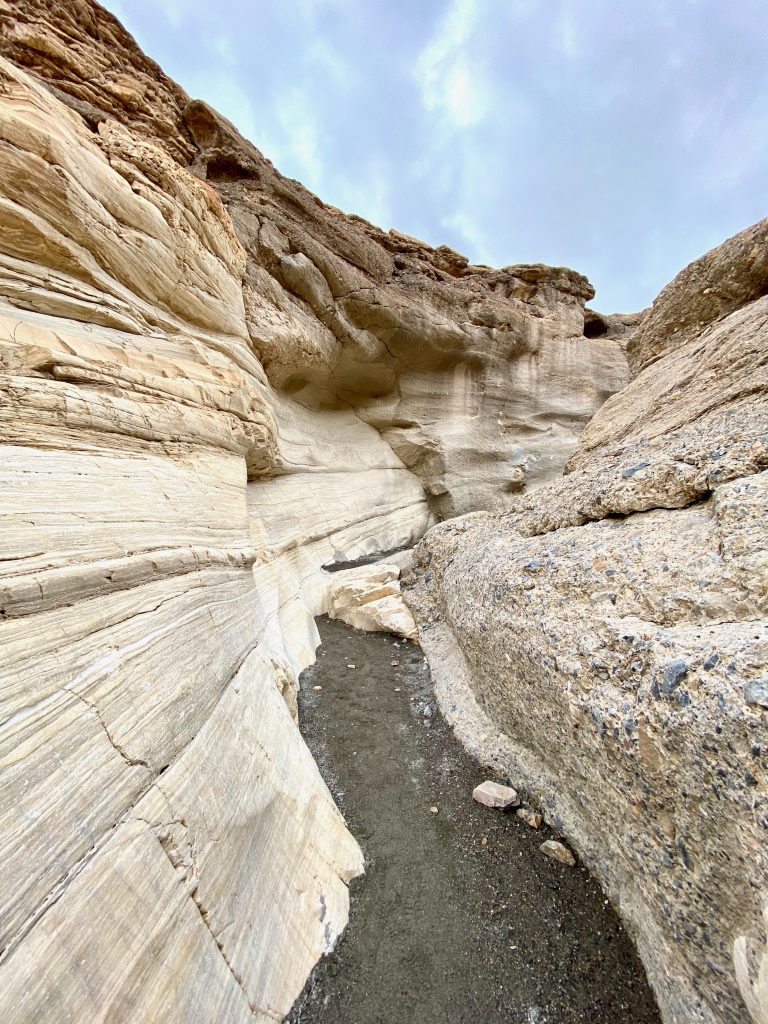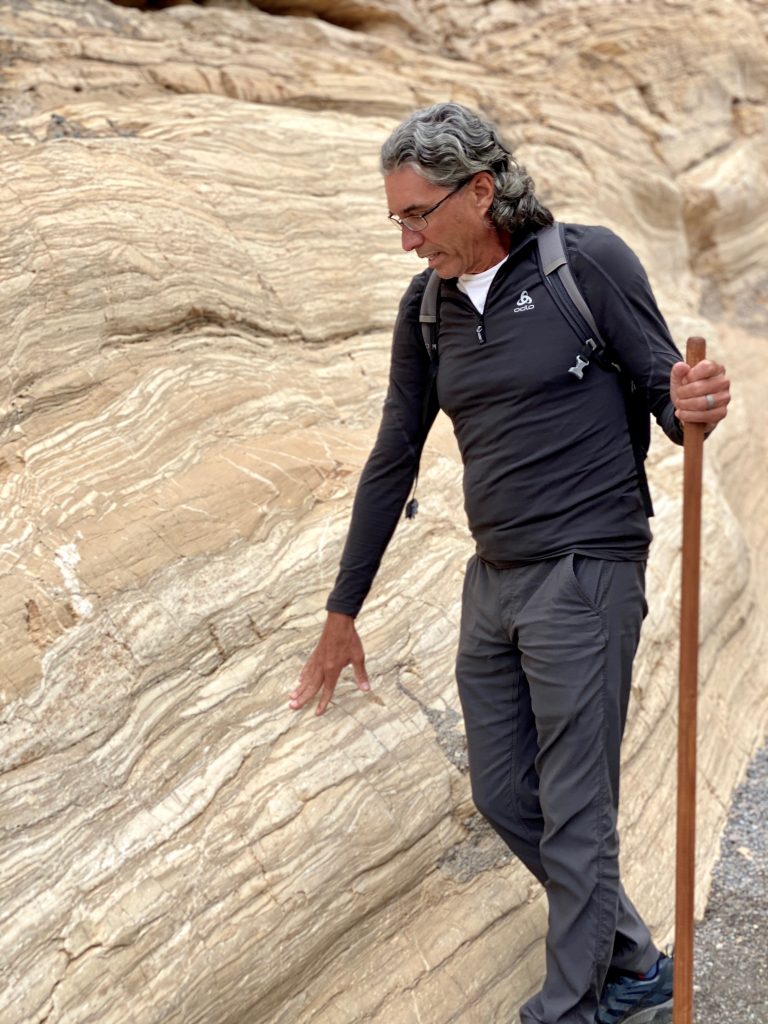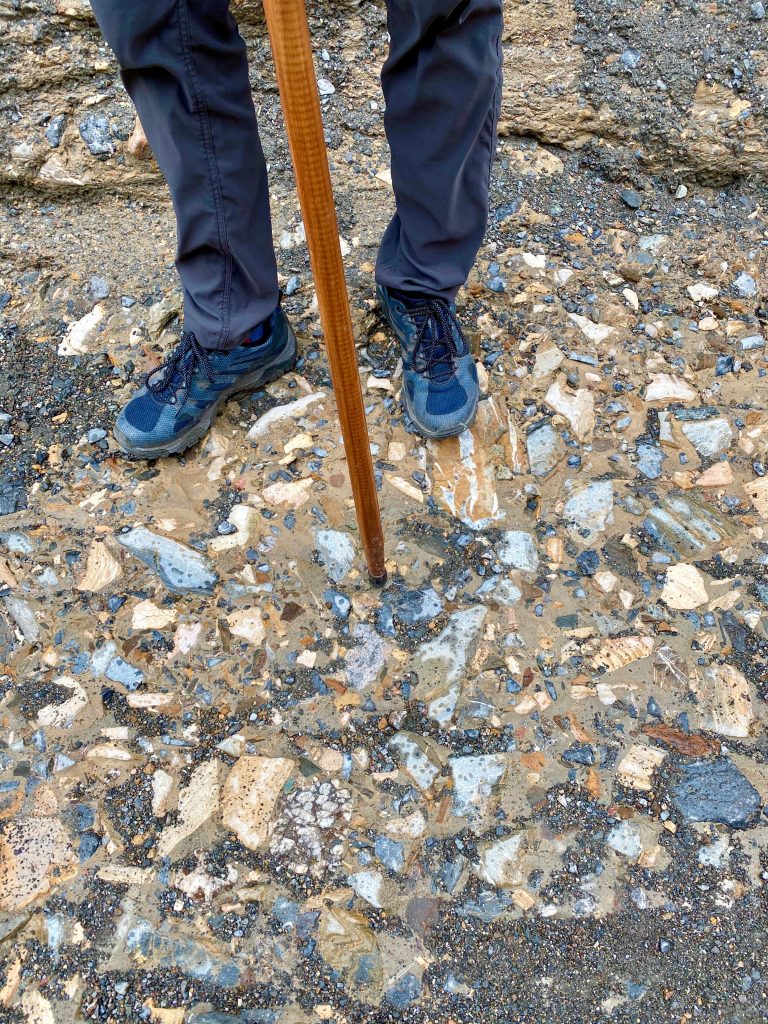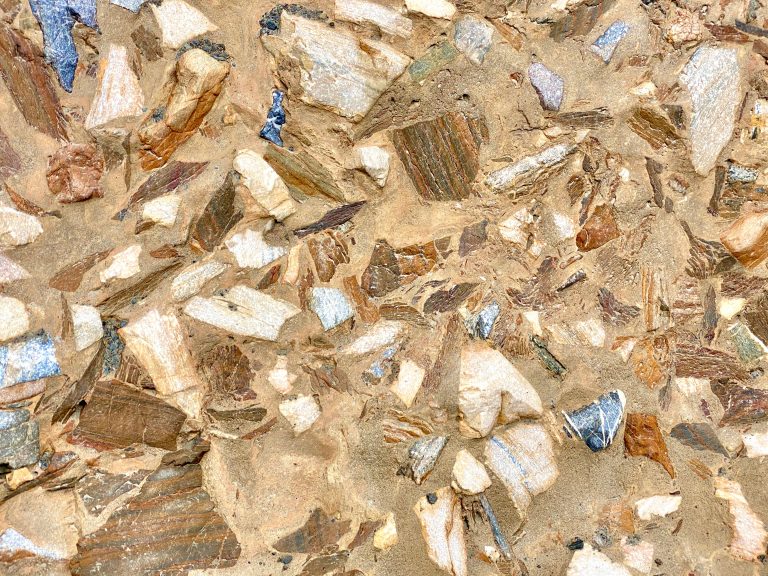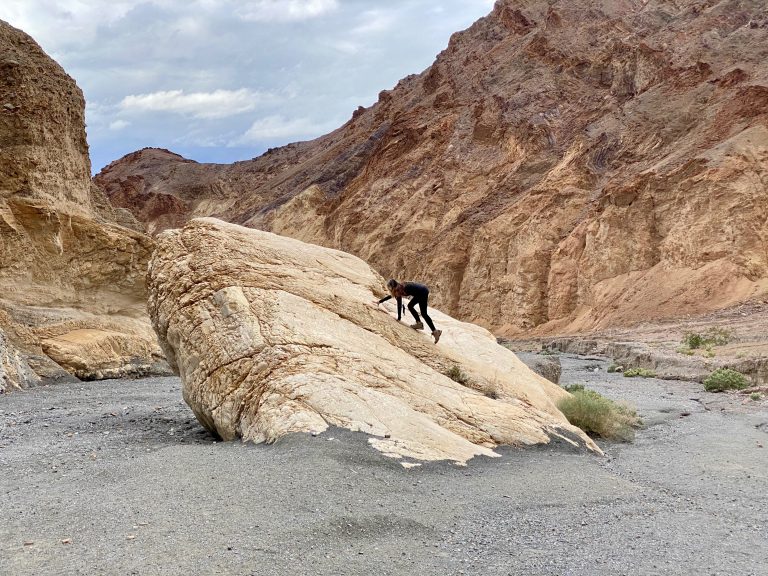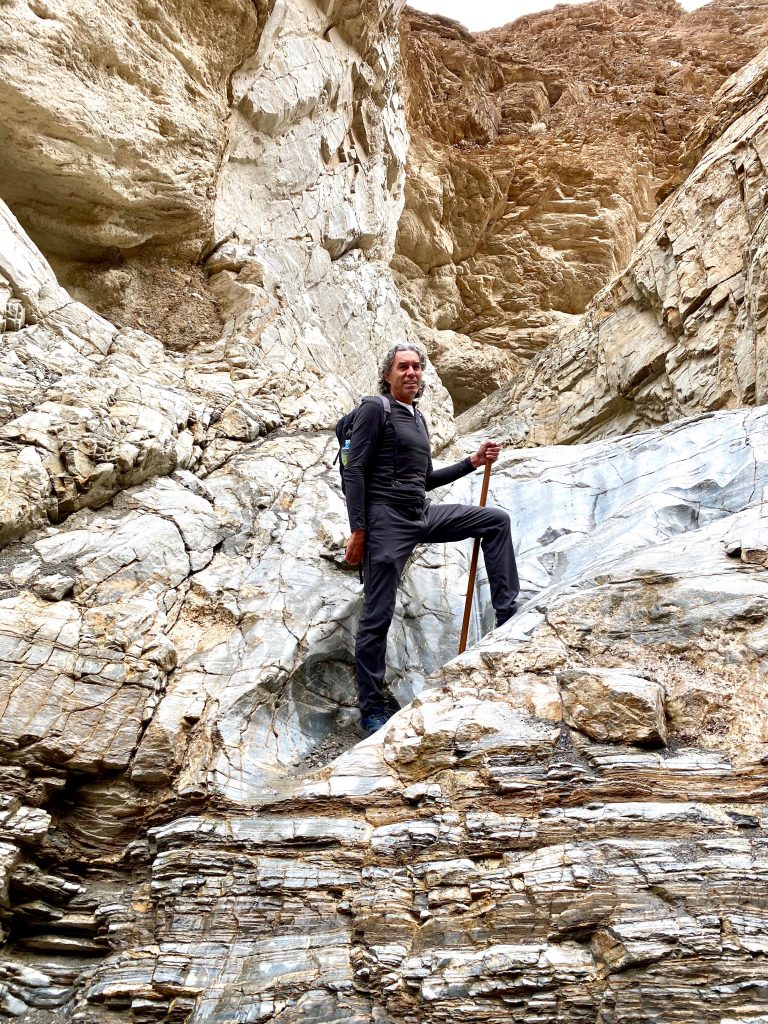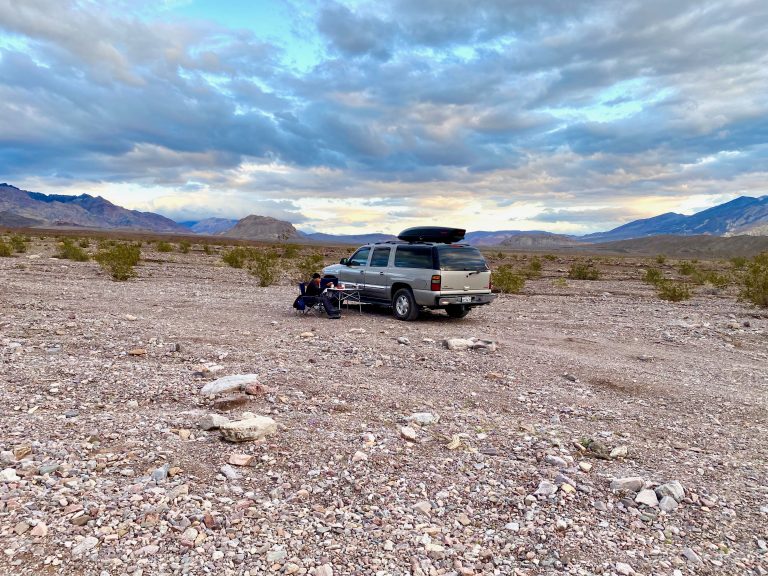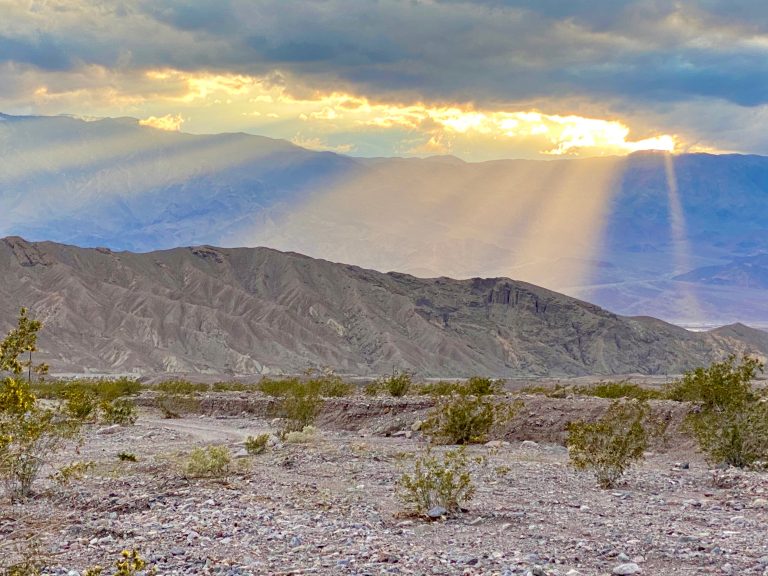March 13, 2020
It was a pleasant evening camping in Mesquite Canyon. Then a gentle breeze sprang up after we’d gone to bed. Soon, the wind speed doubled, then tripled and suddenly lights came on in the campground, voices could be heard and bedlam ensued as the wind gusted high enough to rock the truck. An hour later, the winds began to abate, and a fine rain fell that we could hear on the roof. I closed the windows enough to keep the rain out and we rested as the tenters and RTT (roof top tent) crowd scrambled. At the camp sink the next morning I heard stories of broken tent poles and sleeping in cars. Later in the day we heard about a trailer-mounted tent that flipped, just after its owner darted outside. I, along with most visitors, apparently didn’t expect the wild weather in Death Valley, especially the rain and cool. And the wind. Breakfast was difficult and time-consuming. The hissing propane flame tried mightily to heat the skillet and thus the pancake batter, but it was blown away before it could do its job, leaving me with a half-cooked breakfast.
It was still overcast, drizzling, and windy, but after cleaning up, we drove north to Ubehebe Crater (I have no idea how to pronounce that, but any way you try will make you smile), formed by a giant volcanic eruption that left a huge hole in the earth.
A two-mile trail followed the crater’s rim, which was where we set out, wearing as many layers as we had, wishing we had brought more wind- and rain-proof gear. At the parking lot, a rainbow lit up below us in an elliptical shape, adding much-appreciated color to the gray day. A cold wind blew hard as we hiked upward and circled the loose shale and sand of the crater rim, marveling at the colors below. One section of crater wall was red/orange, another white, others nearly black, along with dozens of shades of brown and grays.
The rainbow of colors in the rock walls of the crater paled, however, when contrasted with a surprising field of blooming magenta flowers on the hillside of an adjacent smaller crater. Back at the parking lot, cars drove up, occupants stepped out into the biting wind and mist and got back in, shaking their heads and no doubt muttering about the cold weather in the hottest place on earth.
The next stop after a picnic lunch at Stovepipe Wells, which was only 10 feet above sea level and thankfully twenty degrees warmer, was a hike in Mosaic Canyon. The first quarter mile was hardly wide enough to walk side by side, with incredibly smooth marble walls, worn down by countless floods, which then opened up to its namesake rocks.
Up the canyon farther, it narrowed again, following a tortuous path up the dry water channel. We scrambled over boulders and up smooth raceways, some slick and wet from the previous night’s rain, always careful to avoid a misstep that could lead to a broken bone. Much scrambling later, we reached the point where going further required technical climbing skills and perhaps ropes. So we stopped and rested, taking in the narrow slot we were in that would be be 40 feet deep in runoff after a big storm.
We were feeling like we were finally getting in to hiking shape with the two good hikes, but had to make some decisions. The coronavirus was beginning to affect the country with school closings and a national emergency was declared. When we found a cell signal, we checked in with our kids to make sure they were prepared as best they could. We decided that being home during the rainy weather there didn’t make sense when we were in such a remote and beautiful place, far removed from virus-carrying people. One more day of hiking in Death Valley would be enough before we would need a new place to explore. Maps came out, high-level discussions were held, and it appeared the Mojave Desert would be next.
One of the park rangers had mentioned that boondocking (camping off-road outside of an actual campground) was allowed along a hard-to-find dirt road in the southern section of the park. Hard-to-find meant let’s-find-it, and Susan realized it was near a place known for spectacular sunrises. So we found the road, set up camp, made dinner, watched the final rays of sun do their best to escape the clouds, set an alarm for pre-dawn, and turned in early.

